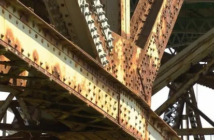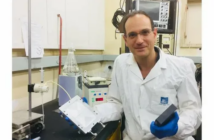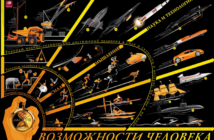INTRODUCTION
It was established in the middle of the past century that under any conditions of an impact, the depth of a crater could not exceed six calibers of a striker. A ratio of a crater depth to a striker size (calibre) was taken as a universal criterion of impact evaluation. However, it should be taken into account that a physical limitation exists for an impact process. Numerous investigations made in various countries on barriers punching allowed us to solve the problems of increase in a relative depth of a crater only in the range of six calibers.
As a result it was found that the experimental results, being out of the limit of six calibres cannot be explained with theoretical models of the impact, created during the last two centuries, cannot explain these results. Nevertheless, more and more frequently the data on abnormalities of relative depth penetrations of the calibers < 100 have been published since the twentieth century. However, the experimental results, inexplicable from the point of view of mechanical and hydrodynamical models, were not given. For example, balls of mercury inside thick steel samples obtained in experiments could not be explained, so these samples were thrown out to a dump , There is a problem of reproducibility of such abnormal results. In the planet’s conditions, natural processes causing such abnormalities are not known.
When a static strength of the barrier material decreases, the resistance to a striker motion in the barrier sharply decreases too and considerable increase in the depth of striker penetration is observed. It is known that for a shot in sand, it is possible to gain the punching depths of tens of calibres. For a shot in water, what is used in a gun expertise, the maximum depth of penetration can attain 100 calibres.
In 1974, S. Usherenko analyzed the known abnormalities of crater formation. It turned out that the so-called anomalous results have been obtained in a region of micro-objects interaction. Special attention was paid to the fact that the experimentally established physical limit of a relative depth of craters formation is explained by the existence of the known constants of mass- and heat- transfer of the barrier material. Therefore increase in a collision velocity, relative density of the striker material and increase in the angle of impact, cannot lead to an increase in the relative depth of cratering. All these parameters of impact cause the change of magnitude of the kinetic energy. However, the energy excess (in an open system) cannot be stored in the barrier material. The increase in impact energy leads to the increase in velocity of reverse emission of the striker and the barrier materials, melting of walls and of the bottom of a crater, and in extreme regimes it causes intense radiation. In the studied variant of interactions at impact, which can be named “macro-impact”, there is no opportunity to realize the phenomena of abnormal and superdeep penetration (SDP). The excess of energy, in one or another way, will be removed from the open system of bodies. The experimental result showed that the limiting value of energy density during macro-impact does not exceed 109 J/m3 [1].
In natural conditions, a SDP process can be observed in the stratosphere and in the free-space, as there are the clots of cosmic dust colliding at high velocity. A principal reason of making difficult detection of SDP on space stations is the absence of reach-through holes and, accordingly, absence of depressurization of the module with the equipment and people. Available information allowed us to assume that in the conditions of SDP implementation, the existing protection of space modules is not effective. Apparently, because of it, on operating space stations, there was a problem with stability of work of computer elements and control systems. The same new factors will represent additional danger for the modules moving with the equipment and people through the regions of the space with high concentration of dust objects.
The set of experimental conditions was determined for which the penetration on relative depths of 100-rl0 000 calibers proceeds stably [1, 2]. After reception of the evidences, that the phenomenon of superdeep penetration exists and that there is a necessity to use physical effects which are observed in SDP conditions, there was a requirement to comprehend a fundamental result. Special attention, for more than thirty years, has been paid to the modelling of a mechanism of effective utilization of the kinetic energy of the SDP process [2-4]. However, the presented concept of the phenomenon of superdeep penetration has not appeared to be a successful one. With the new experimental results obtained, the models of SDP process were rejected because they could not be used for explanations.
Продолжить чтение в формате PDF










